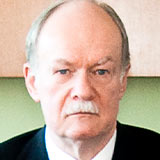Canada has remained relatively unscathed by the turmoil surrounding the major Western markets and the emerging-markets slowdown, so it would pay to have some holdings in the Great White North, says Pat McKeough of TSI Network.
One of the trends in Canadian investing in recent years has been for companies to expand internationally. This strategy can diversify a company’s customer base and add revenue, although it can also add risk.
Linamar (Toronto: LNR) makes engines, transmissions, and other precision-machined parts for the North American, European, and Asian car and truck markets. The company has 39 plants in Canada, the US, Mexico, Germany, France, Hungary, South Korea, and China.
The company gets 90% of its revenue by selling auto parts. It gets the remaining 10% from industrial products, like its Skyjack self-propelled, scissor-type elevating work platforms. Linamar also makes parts for lawnmowers, wind turbines, and drilling equipment.
To cut its reliance on the North American auto industry, Linamar is expanding overseas. It now gets 30% of its revenue from its international operations, up from 20% five years ago.
For example, Linamar recently paid $26.6 million for three plants in France. These facilities supply cylinder heads, engine blocks, gears and other parts for large engines and transmissions to French carmakers Renault and Peugeot.
The company is also seeking growth in Asia. It opened its first plant in China in 2009, and aims to build two more over the next few years.
Canadian Income
Many investors are concerned about today’s market outlook. However, a strong point over the past few years has been the reliability of Canadian dividend stocks.
A good example of this is BCE Inc. (Toronto: BCE), a utility stock that has grown its dividend and continues to provide capital gains to patient investors.
BCE earned $663 million in the three months ended June 30. That’s up 11.4% from $595 million a year earlier. Earnings per share rose 10.3%, to 86 cents from 78 cents, on more shares outstanding. The latest earnings beat the consensus estimate of 81 cents a share.
BCE’s revenue rose 11.6% in the quarter, to $5 billion from $4.4 billion. However, revenue fell 2% at the wireline division, which accounts for 53% of BCE’s total revenue. This division, which includes BCE’s traditional landline business, is facing rising price competition.
As well, many customers are canceling their land lines and switching to wireless devices. These losses offset higher revenue from the wireline division’s satellite and Internet-based TV services.
Still, revenue from wireless services rose 6.1%. The company’s recent network upgrades continue to attract new subscribers and prompt existing customers to upgrade their mobile-phone plans. This division added 36,507 subscribers in the quarter (net of deactivations).
BCE could benefit from rising use of smartphones, which generate higher monthly fees than regular cell phones. BCE now has a total of 7.3 million wireless customers. However, this market continues to attract very stiff competition.
Canadian Healthcare, US Growth
Medical Facilities Corp (Toronto: DR) owns majority interests in four specialty surgical hospitals located in South Dakota and Oklahoma, as well as an ambulatory surgery center in California.
The specialty hospitals perform scheduled surgical, imaging, and diagnostic procedures. Their revenue comes from fees they charge for the use of their facilities. The ambulatory surgery center specializes in outpatient surgical procedures. Patients typically stay in this facility for less than 24 hours.
In the three months ended June 30, Medical Facilities’ revenue rose 6.2%, to $54.3 million from $51.2 million (all figures except share price and market cap in US dollars). Cash flow per share rose 6.3%, to 34 cents from 32 cents.
Medical Facilities will benefit from rising demand for its services as the US population ages. Moreover, physicians who practice at its facilities retain a minority stake in the company; that adds some continuity to Medical Facilities’ operations.
However, the company’s health-care facilities are subject to numerous and constantly changing legal, regulatory, professional and private licensing, certification, and accreditation requirements. That adds an element of uncertainty to its operations.
The company converted from an income trust on June 1. It continues to pay a high dividend, and the shares yield 11%. However, it may need to cut that high dividend in the near future.
Read more from TSI Network here…
Related Reading:


















